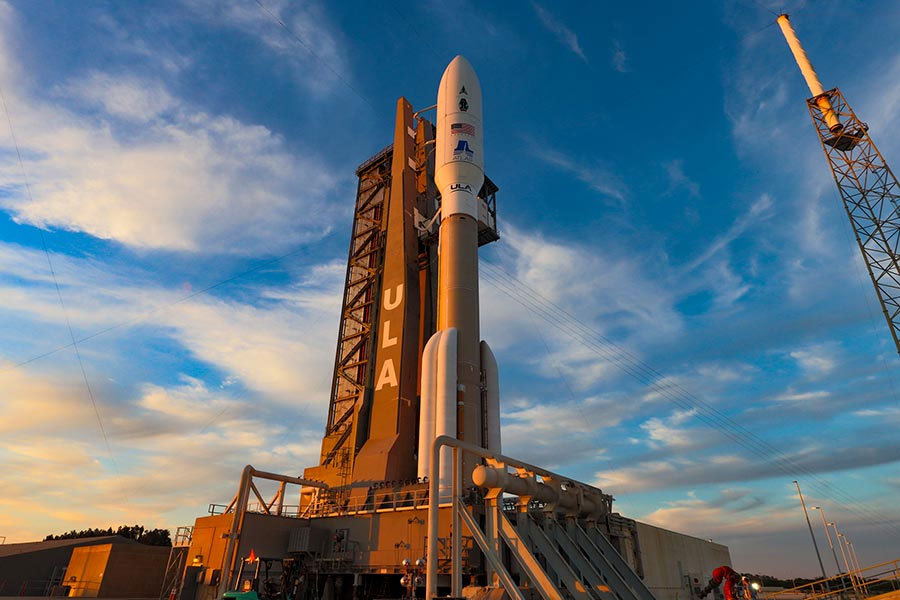NOAA GOES-T Launch
On March 1, the GOES-T satellite was launched into space on a United Launch Alliance (ULA) Atlas V rocket from Florida’s Cape Canaveral Space Force Station. About 3.5 hours after lift-off, GOES-T was deployed from the Atlas V’s upper stage.
Overview:
- GOES-T is the latest spacecraft in the USD 11.7 billion Geostationary Operational Environmental Satellite (GOES)-R series launched by the National Oceanic and Atmospheric Administration (NOAA).
- The satellite is on its way to geostationary orbit, approximately 35,900 kilometres above Earth.
- After having reached geostationary orbit, it will be renamed as GOES-18. Then, it will start a lengthy commissioning period.
- It will be initially placed around 89.5 degrees west longitude, which is the central United States, where it will commence post-launch testing for the next few months.
- In May, it will be placed approximately 137 degrees west, over the eastern Pacific Ocean and in early 2023, the GOES-18 will replace GOES-17.
Applications of GOES-T
GOES-T will be used for monitoring wildfires across the western United States, including Hawaii and Alaska and storms across the Pacific Ocean. Tracking the smoke from the wildfires will be crucial as information can be provided to the firefighters and the public regarding the hotspots.
An advanced lightning mapper has also been attached to the GOES-T which is optimised to see atomic oxygen and is an improved version of the one on the previous GOES-R satellites. Pressures and temperatures experienced after lightning strikes excite atomic oxygen.
Geostationary Lightning Mapper (GLM) includes three optical filters that can reduce solar glare, allowing it to view lightning during the day without capturing extra light, which is far more difficult than seeing it in the dark. The GLM data will provide better details regarding lightning strikes before the storm fully develops, which forecasters will be able to use to predict where and how dangerous weather might intensify.
The satellite will also be able to assist other missions to monitor space weather, such as solar storms, in order to protect satellites, power grids, and other infrastructure. Advanced Baseline Imager (ABI) instrument will also be used by this satellite to photograph the entire Earth disc every 10 minutes. The ABI instrument of GOES-T has a redesigned radiator that will improve its thermal control thus, increasing reliability on both the lightning mapper and propulsion system. This satellite’s magnetometer will also be more accurate than the ones used in the earlier satellites.
About NOAA
The National Oceanic and Atmospheric Administration (NOAA) is an American scientific and regulatory agency within the Department of Commerce that forecasts weather, monitors atmospheric and oceanic conditions, conducts deep-sea exploration, charts the seas, and manages fishing and the protection of endangered species and marine mammal found in the US exclusive economic zone.
Month: Current Affairs - March, 2022
Category: International / World Current Affairs






